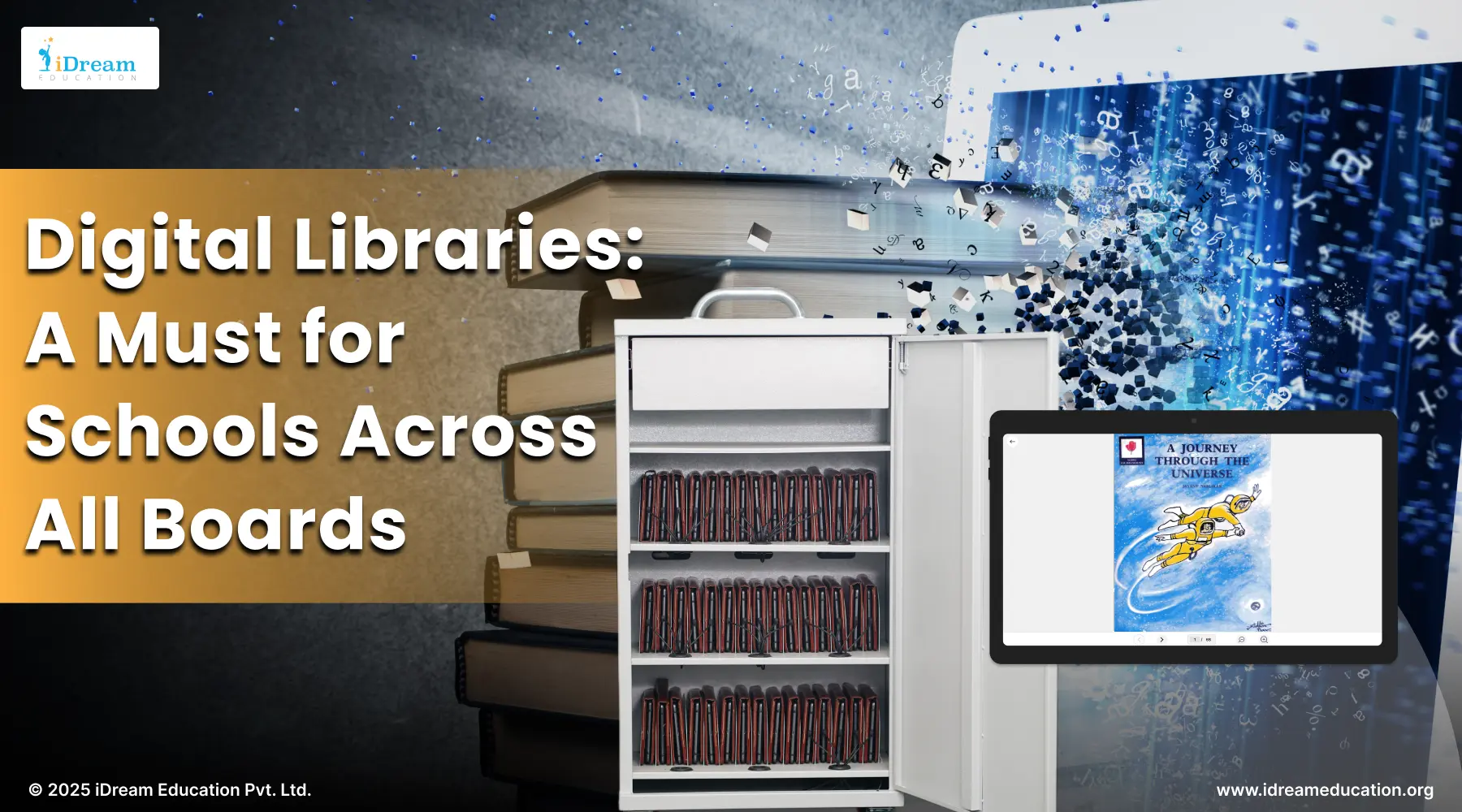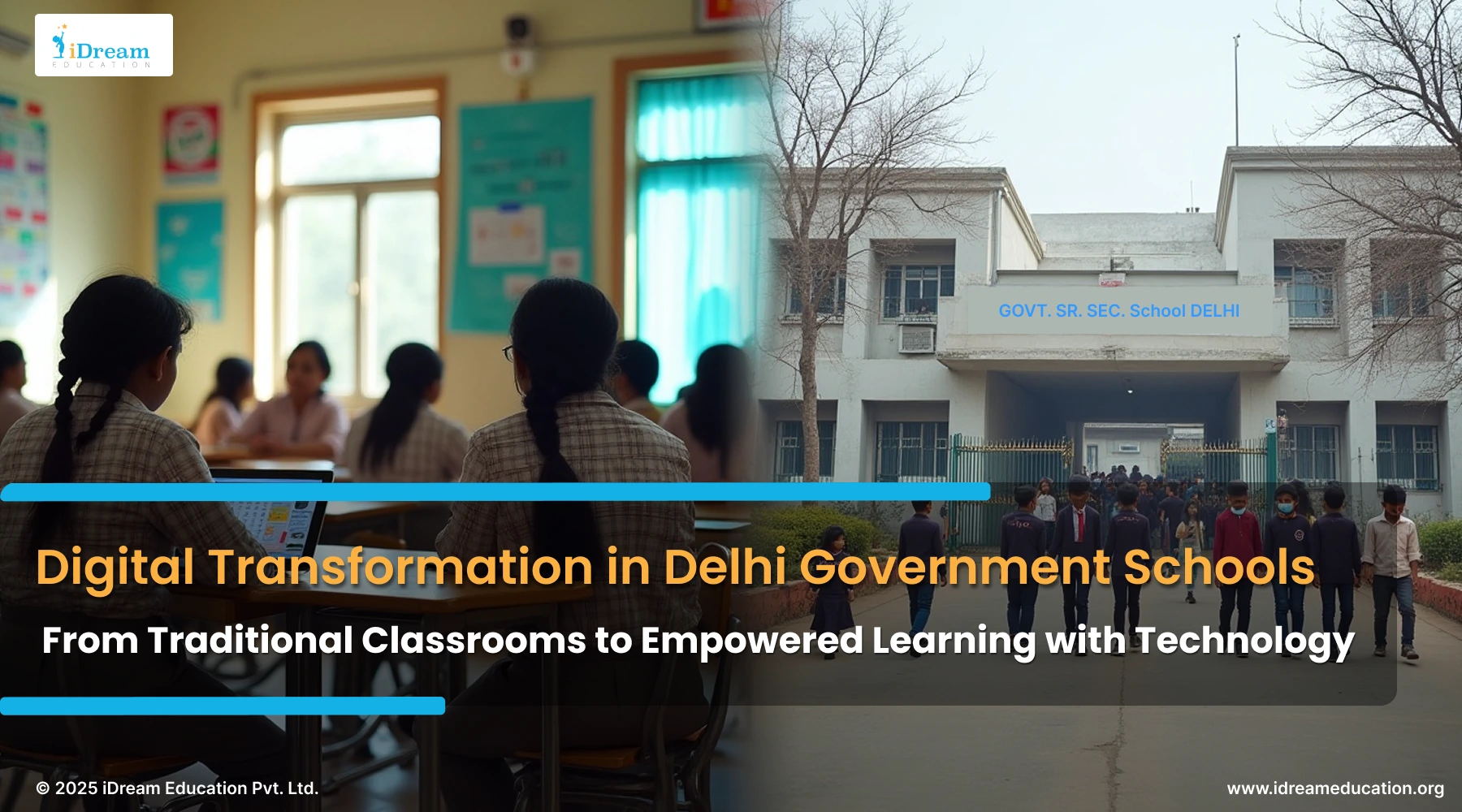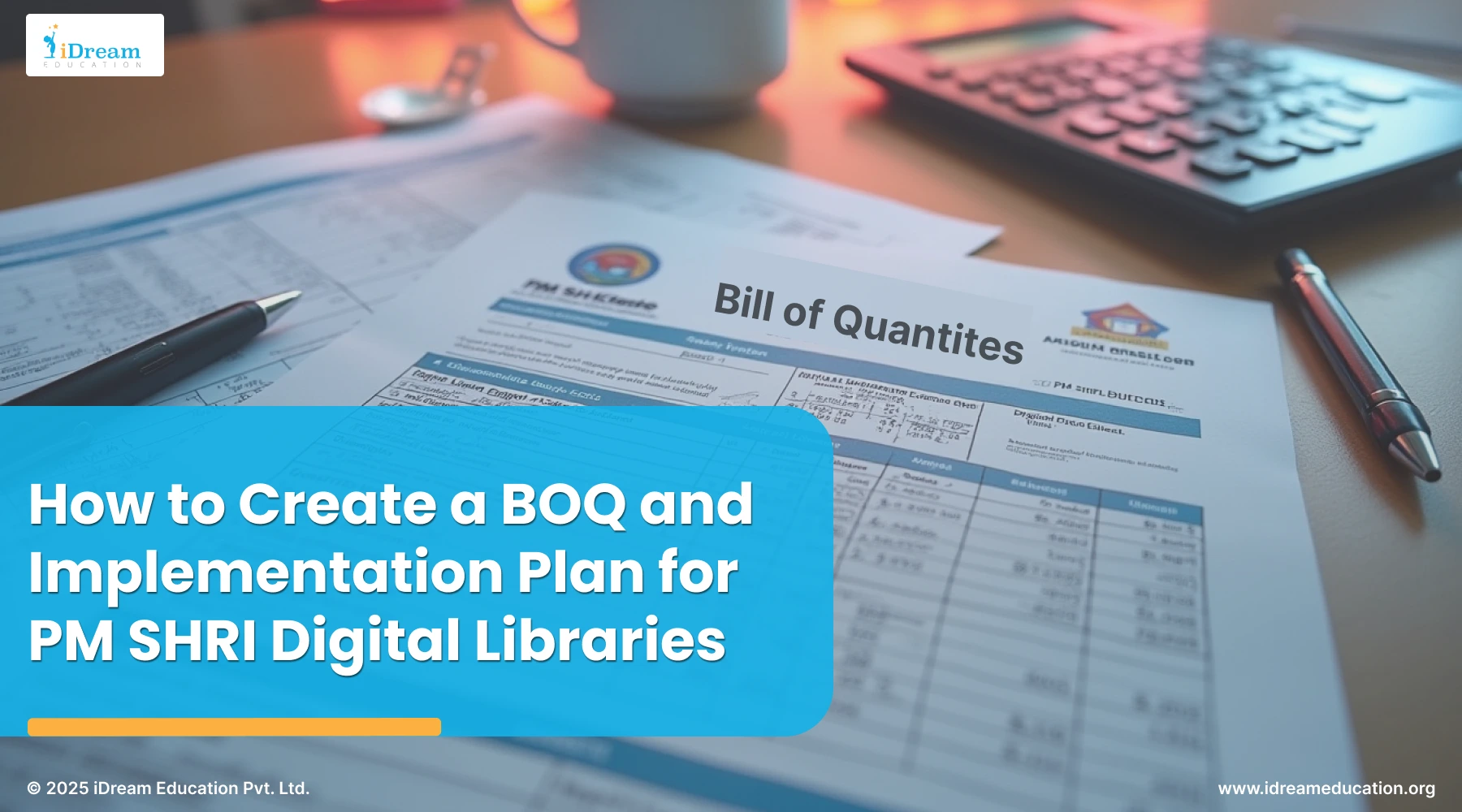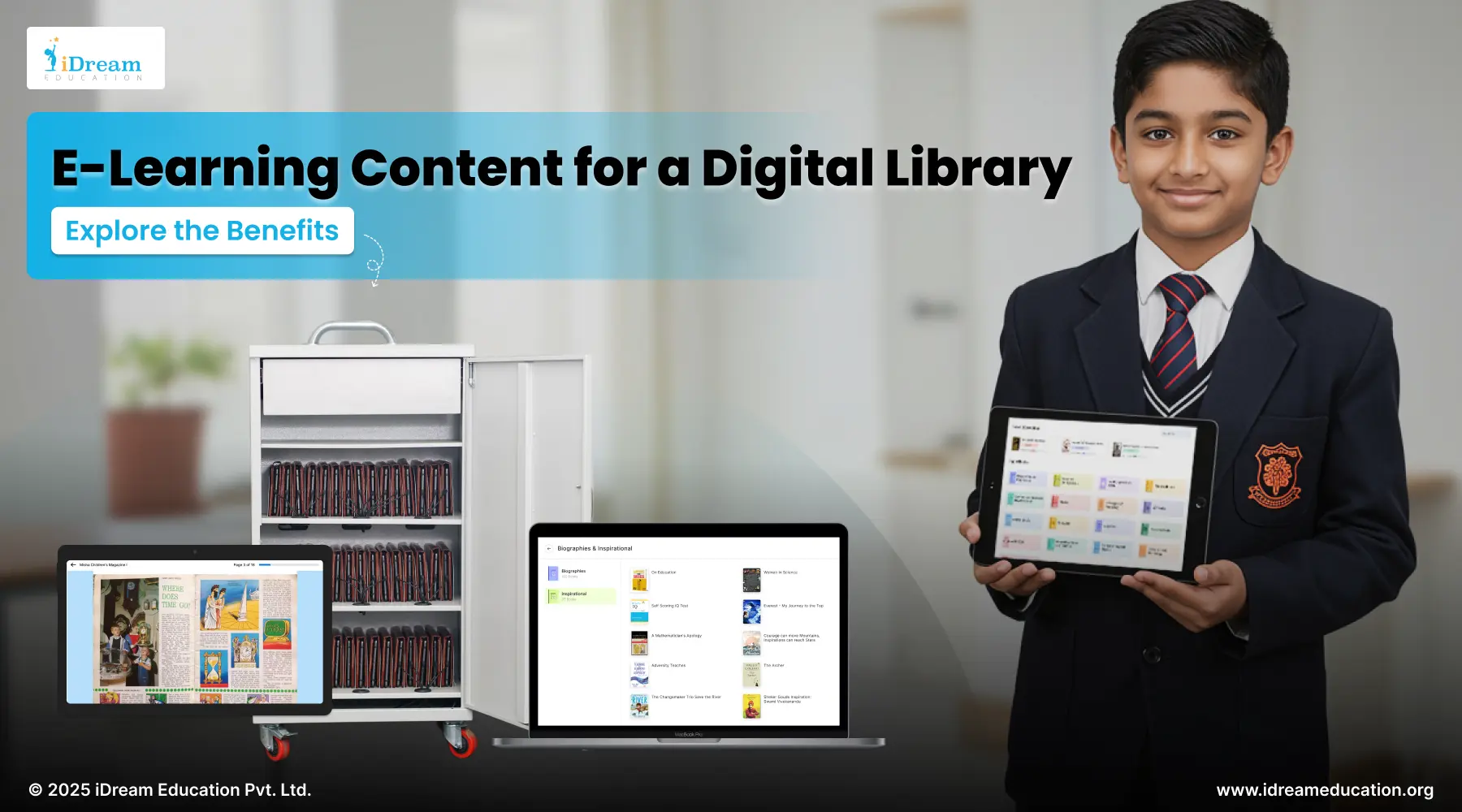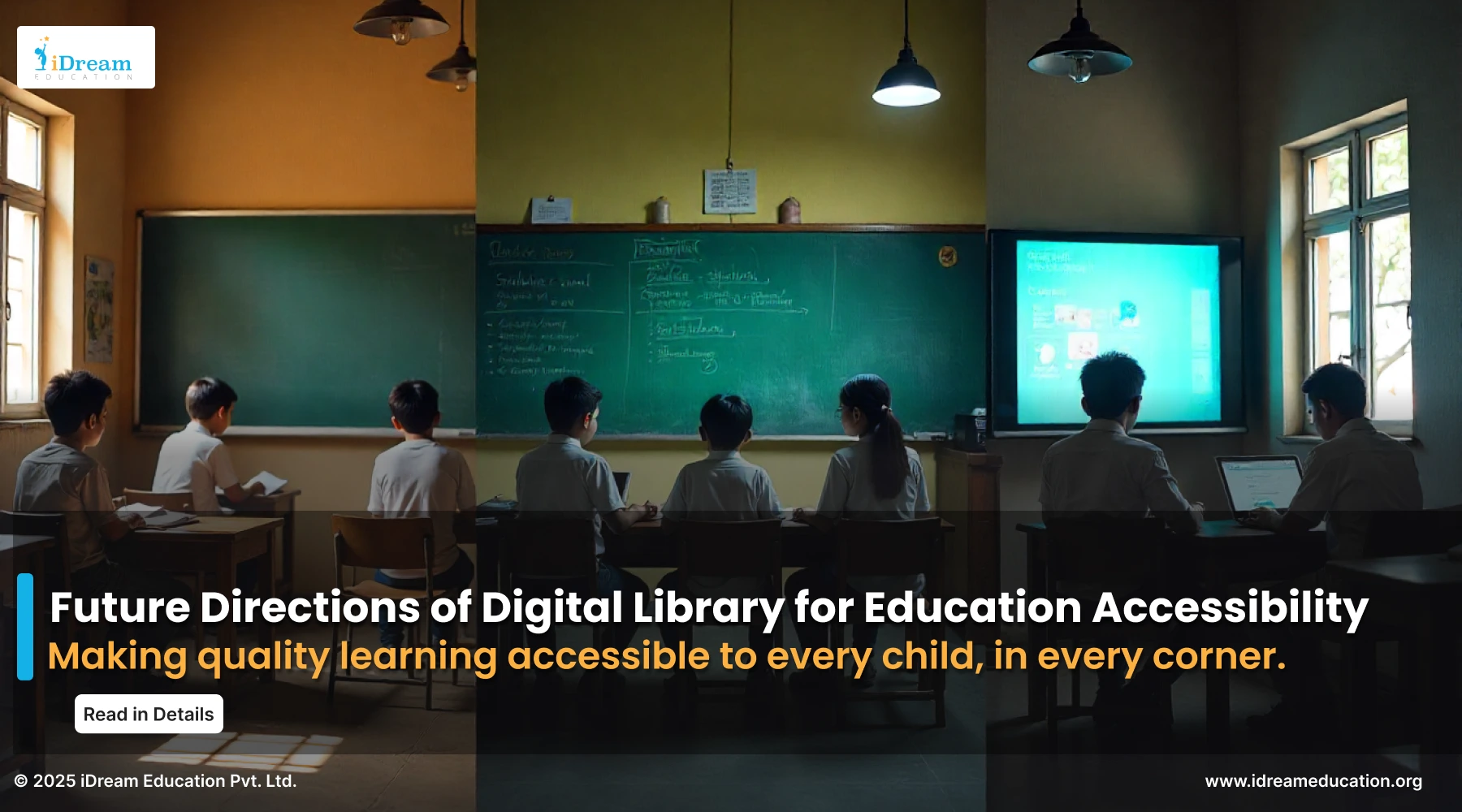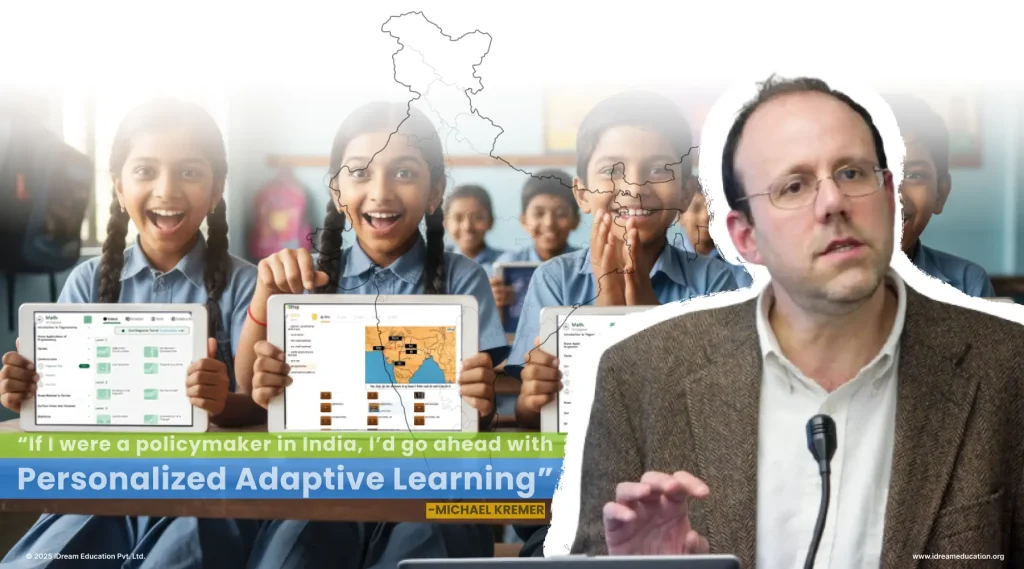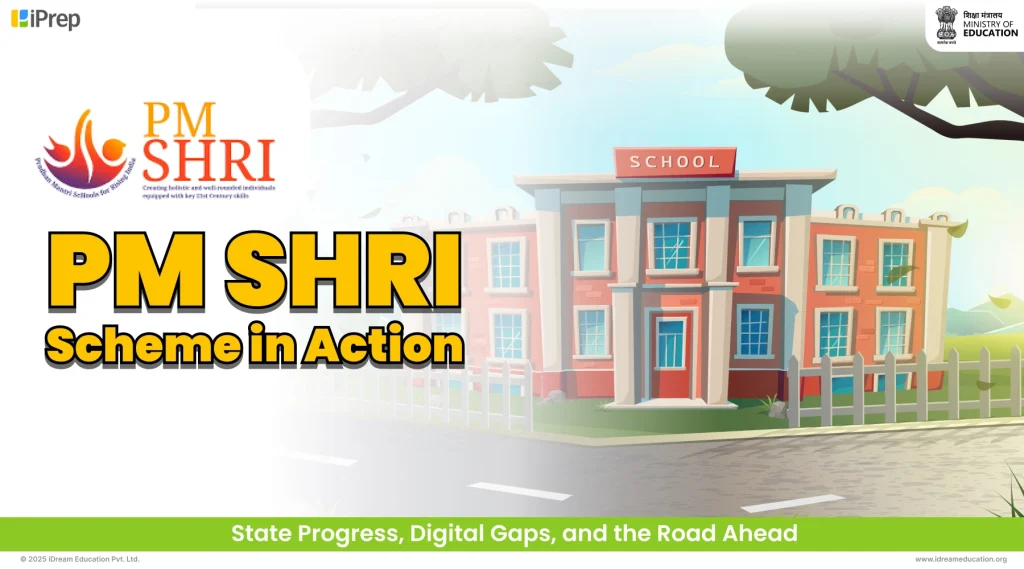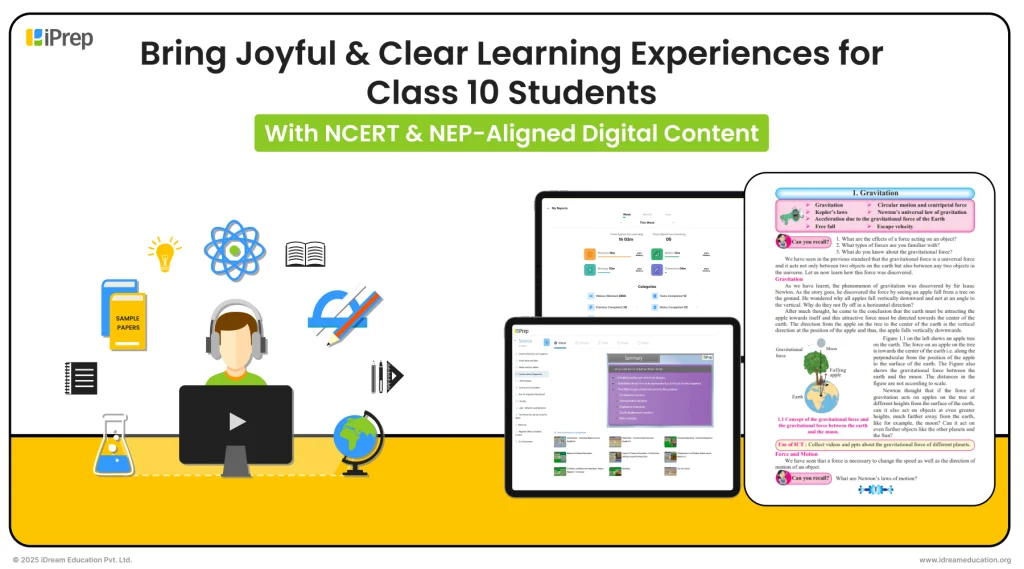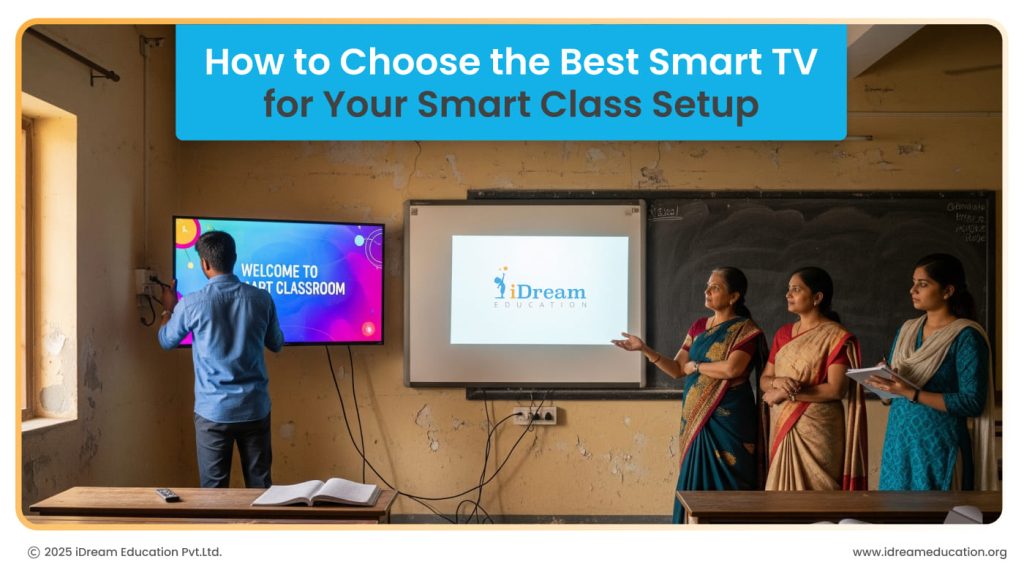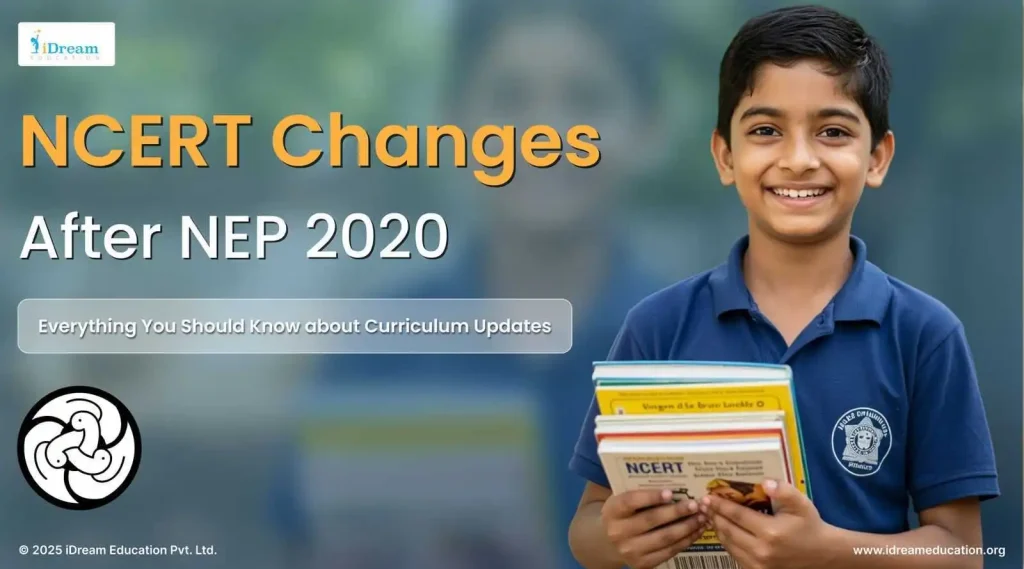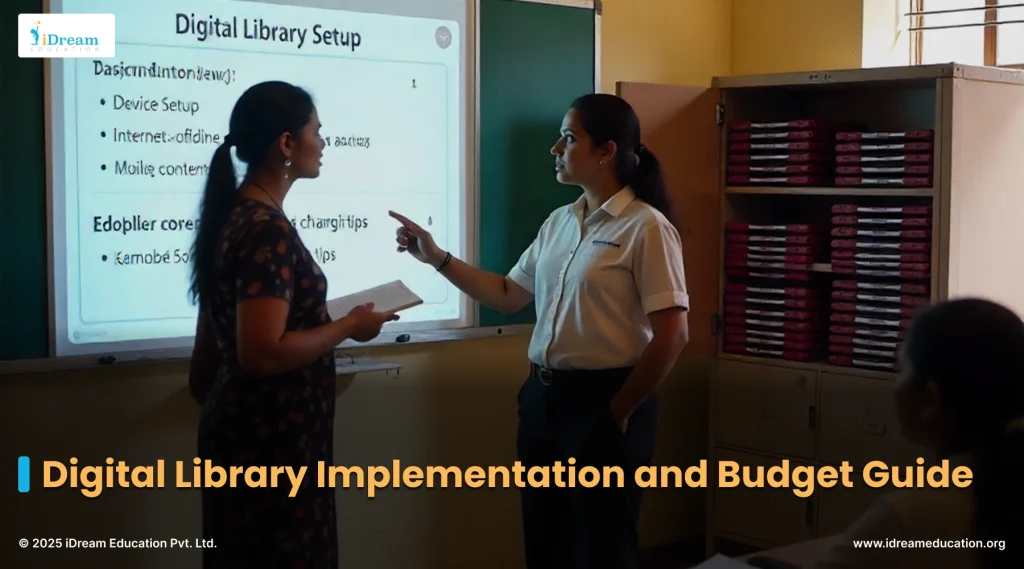
Introduction
Digital Library Implementation Guide is a must-have resource for schools planning to integrate digital learning tools effectively. With the rise of digital libraries across Indian classrooms, educators need a clear, step-by-step roadmap that covers infrastructure, content access, offline readiness, and budgeting to ensure sustainable and inclusive learning for all students.
Establishing a sustainable digital library system requires a clear understanding of both technical infrastructure and financial planning. Schools need to balance device choices, content diversity, and budgeting while considering varying levels of internet connectivity and classroom environments. This article provides detailed guidelines framed around proven experience from affordable digital library solutions for schools.
Technical Infrastructure in Schools: A Key Part of the Digital Library Implementation Guide
A strong foundation is essential for the success of any school-based digital library. As outlined in this Digital Library Implementation Guide, the process begins by assessing your school’s existing infrastructure, power supply, internet connectivity, classroom layout, and teacher readiness. These insights help define the right mix of devices and rollout strategies.
- Device selection should reflect students’ age groups, usage patterns, and available budgets. Tablets offer ease of use and portability for younger learners, while desktops or laptops may work better for older students or fixed labs.
- Charging and security logistics also matter. Modular charging racks, which work with limited power outlets, are especially useful in rural schools. Since many Indian schools face connectivity issues, selecting platforms that work offline with periodic online updates ensures consistent access to digital content.
- The system should also support local languages and align with curriculum standards to remain inclusive and educationally relevant.
As emphasized in this Digital Library Implementation Guide, long-term success depends on well-defined plans for technical support. Assign responsible staff to manage devices, troubleshoot problems, and keep systems running smoothly. These technical considerations reflect lessons learned from successful deployments discussed in the bilingual digital library platform insights.
Digital Library Content Integration
Selecting and organizing digital content is central to making a library valuable for both students as well as teachers. Content must align closely with curriculum requirements, language needs, and diverse learning styles.
To maximize the benefits of digital libraries’ implementation in schools, it’s essential to begin with resources that align with the Indian education system. Whether a school follows NCERT, CBSE, or a state board syllabus, the digital content should match these standards. This way, teachers can easily use it while planning their lessons, and students can better prepare for their exams. Many digital library platforms already offer materials designed to fit these curricula, making it easier for both students and teachers.
Because classrooms across India often include students who speak different languages, digital libraries that support multiple languages are incredibly valuable. Content available in regional languages like Hindi, Tamil, and Bengali, as well as in English, ensures that more students can understand and engage with their lessons. Being able to switch between languages smoothly is one of the top features in high-quality bilingual library platforms.
An ideal digital library solution isn’t just filled with textbooks. It should include animated videos, interactive quizzes, storybooks, and modules that build different skills. This variety supports all types of learners and keeps students engaged by offering more than just reading. Another benefit is the ability for educators to track student usage and progress through built-in tools. These insights help teachers understand how students are interacting with the material and where extra help might be needed. It allows for more personalized teaching based on real data.
Implementation Steps for Successful Digital Library Deployment
Introducing a digital library for education in a school setting requires a thoughtful approach. A well-structured plan, like the one outlined in this Digital Library Implementation Guide, helps ensure smooth adoption and long-term success.
Start with a Pilot Program
Begin small by testing the digital library in a few classrooms or specific grades. This allows the school to evaluate the platform, understand challenges, and collect feedback before scaling it across the school.
Train the Teachers
As emphasized in this Digital Library Implementation Guide, teachers need to feel confident using the platform. Organize hands-on training to help them implement content, search efficiently, and use tracking tools. Follow-up sessions will support continued learning and effective use.
Prepare the Students
Help students get started by showing them how to access the content and use the devices. This is especially useful for kids who may not have used digital tools before.
Set Up Ongoing Support
Have a system in place for answering questions or solving issues. This can include dedicated staff, peer helpers, or simple how-to guides. Fast support prevents frustration and helps students and teachers stay focused on learning.
Monitor and Adjust
Track how the library is being used. Analyze popular content, identify gaps, and adapt accordingly. Any good Digital Library Implementation Guide includes a feedback loop to keep the system dynamic and relevant.
Expand Gradually
As the system proves useful, increase access to more students and offer more content. This keeps costs in check and ensures the school is ready to support the growth. These steps have been successfully followed by schools across India that now have well-functioning, affordable digital libraries.
Digital Library Budget Planning and Cost Structure
Understanding the financial aspects is critical to the successful establishment and sustainability of digital libraries in Indian schools. A good budget plan, especially when aligned with CSR education initiatives, helps education leaders make informed decisions and avoid interruptions in digital learning services.
Planning the Budget: What to Keep in Mind
Setting up a digital library at your place involves multiple cost areas that should be detailed and planned:
- Hardware Costs: Choose devices like tablets, laptops, or desktops based on the school’s needs. Also, include accessories like charging stations or storage units. Durable devices are better in the long run, as they last longer and need fewer repairs.
- Software and Licensing: Some platforms charge fees for content access. These might be based on the number of students, devices, or be a flat rate for the school. It’s important to know what the fee includes, such as updates or tech support.
- Content Expenses: Quality digital content often comes at a cost. Look for the best digital library provider that offer materials matching NCERT, CBSE, or local board standards. This ensures the content is useful and relevant.
- Training Costs: Include expenses for training teachers and staff. Budget for both initial and ongoing sessions. Good training leads to better usage and fewer tech issues.
- Support and Maintenance: Digital libraries need regular updates, repairs, and help for users. Plan for these ongoing costs, especially in areas where it may be harder to get tech support.
Funding Sources and Financial Sustainability
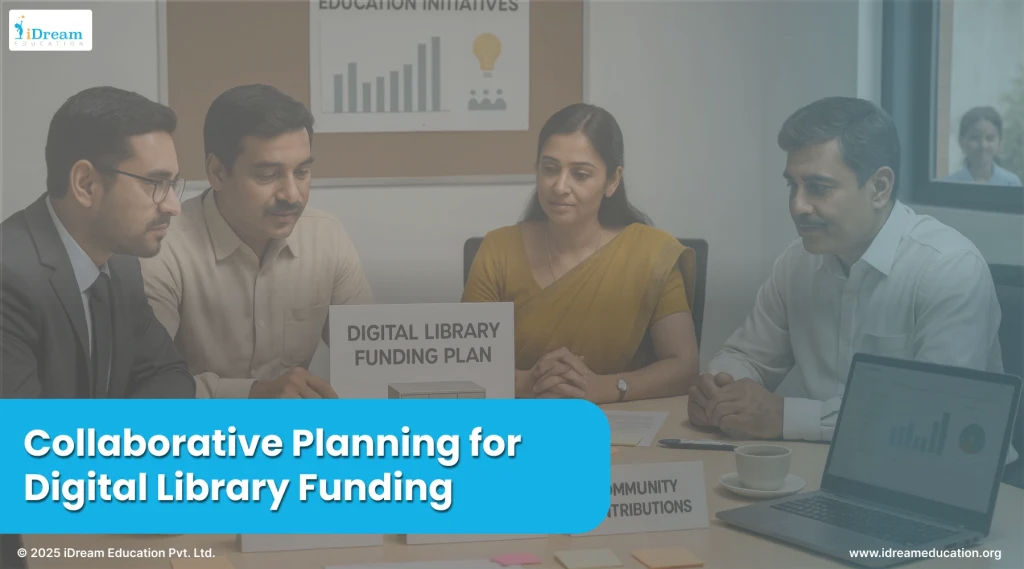
Sourcing funds for digital libraries can be complex, but it is critical for project success. Some common avenues include:
- Government Educational Schemes
Central and state programs, including those aligned with National Education Policy mandates, often allocate funds specifically for digital infrastructure in schools. The best CSR programmes often tap into these schemes to maximise reach and efficiency. - Local Education Budgets
District or school-level funding may be supplemented for digital initiatives based on demonstrated needs and past utilization. This can guide organisations in deciding where to spend CSR budget for maximum impact. - Corporate Partnerships and NGOs
Many education based ngo, corporations and nonprofit organizations support digital literacy and education technology projects. Partnering with such entities can bring device grants, content donations, or technical expertise. - Community Contributions
Local community organizations or parent-teacher associations may also provide resources, especially for maintenance and support after initial setups.
Examples from Indian Schools: Practical Deployments and Learnings
Real-world implementations offer valuable insights into how digital libraries can be successfully integrated into varied school environments across India. These examples highlight different strategies tailored to local challenges and resources.
1. Large-Scale Tablet Deployments in Karnataka
In Karnataka, digital library deployments have involved setting up tablet-based libraries across hundreds of schools. Typically, each library is equipped with around 20 tablets, combined with modular charging racks that simplify power management and device security. Schools establish shared usage schedules, allowing many students to benefit from limited devices efficiently.
This approach addresses infrastructure limitations by minimizing the need for dedicated computer labs or internet connections. Teachers receive targeted training to incorporate tablet-based content into daily lessons, and usage data is collected regularly to gauge engagement and learning outcomes.
The experience of setting up Digital Library in Karnataka signifies the importance of flexible device management and phased implementation to scale digital access in diverse educational settings.
2. Offline Digital Libraries Serving Rural Communities
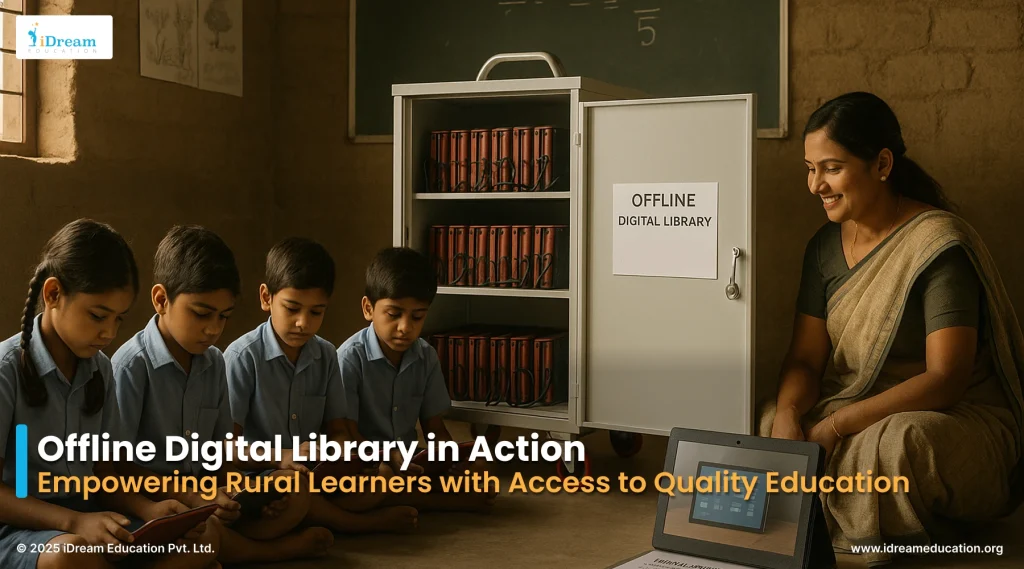
Many rural schools face frequent internet connectivity challenges. To overcome this, solutions based on local servers have been deployed. These servers distribute content within the school network without requiring constant internet access.
This offline-first model ensures all students can access up-to-date learning materials anytime. Content can be synchronized with central servers periodically when internet access is available. This method significantly reduces costs associated with data usage and ensures uninterrupted learning, even in remote locations.
Moreover, local server digital libraries, often considered among the best digital library for schools, support multiple languages and can cater to various curricula, thereby enhancing their relevance to the community.
3. Bilingual Libraries Supporting Linguistic Diversity
Some schools, especially those in linguistically diverse regions, have integrated bilingual digital library platforms to support students’ learning in English and their native languages. These platforms provide parallel content, allowing learners to switch seamlessly between languages.
This multi-language approach improves comprehension and engagement, particularly for students who may struggle with English-only resources. It also respects the cultural context of learners, fostering inclusivity and equity within classrooms. These bilingual digital libraries enhance accessibility while maintaining alignment with national and state education standards.
These examples demonstrate that successful digital library implementation depends on adapting to local conditions, whether through device sharing, offline content delivery, or multilingual support. Schools that tailor solutions thoughtfully and engage teachers and students throughout the process can create sustainable digital learning environments.
Best Practices for Lasting Success in Digital Library Adoption
Building a digital library for students is more than just providing devices and software. Sustainable success comes from thoughtful planning, regular updates, and ongoing engagement across the entire school community.
Keep the System Simple and Adaptable
Choose solutions with clear navigation and intuitive design, so every user, regardless of their comfort with technology, can quickly find what they need. Platforms highlighted in the guide for setting up a digital library for schools provide helpful checklists and examples of user-friendly systems. Simplicity helps boost usage, and adaptability means the system can grow as needs evolve.
Update Content Regularly
Consistently update the library with new resources, fresh lessons, recent books, and interactive activities. This maintains student interest and ensures alignment with the most recent standards and syllabus. Use reporting tools to discover which subjects or materials are most used and which are underserved. Reviewing such insights is a key aspect of a robust digital library repository.
Support Multilingual and Regional Needs
A successful digital library serves all learners, regardless of language background. Look for content and platforms supporting Hindi, English, and regional languages. Schools in Bihar benefit from resources tailored to their syllabus, as seen in this Bihar board digital content collection. For broader inclusion, consider options that offer bilingual digital library platforms.
Blend With Classroom and School Routines
Digital libraries are most valuable when integrated into daily teaching, not viewed as a separate activity. Teachers can use digital resources for class assignments, group work, or extra practice. Understanding the differences between digital classes and smart classes, explored in this comparison of digital class versus smart class, will help tailor integration to your school’s strengths.
Use Data for Continuous Improvement
Utilize analytics and reports to spot trends in usage and learning outcomes. These insights guide what to improve, which content to add, and how to support both high-achieving and struggling students. A cost-effective digital library model emphasizes not just initial savings but the ongoing value created through regular checks and responsive content updates.
By focusing on engagement, simplicity, up-to-date and diverse content, language inclusion, and ongoing evaluation, schools can create digital libraries that grow in value year after year. The right approach makes digital resources a lasting part of everyday teaching and learning, giving every student fair access to new knowledge and skills.
Conclusion
Implementing digital libraries in Indian schools requires careful attention to both technical and financial aspects. Success depends on matching the right technology and content to the needs and context of each school. Thoughtful planning of devices, connectivity, and curriculum-aligned materials supports meaningful student engagement and learning.
Financial planning should include all costs from hardware and software to training and ongoing support. Using phased rollouts and shared device models can help manage expenses while expanding access gradually. Leveraging government programs and community partnerships can also ease budget pressures.
Best results come from involving all stakeholders, including teachers, students, and parents, in the process. Keeping content up to date and supporting multiple languages enhances inclusion and impact. Continuous monitoring and adaptation ensure the digital library remains relevant and effective.
By following these guidelines and learning from established examples, schools can build sustainable digital library systems that improve educational outcomes and provide equitable access to knowledge for all students.
For more information, you may contact us at +917678265039. You can also write to us at share@idreameducation.org or share your details here.


